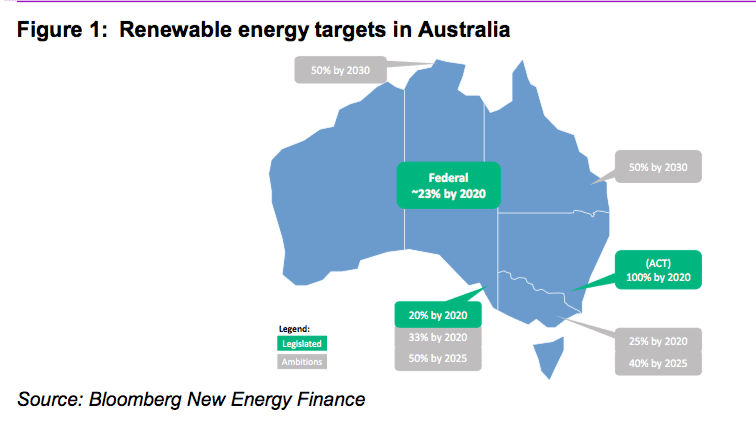One of the world’s leading energy analysts has raised concerns that the Australian federal government’s focus on “energy security” could simply be used as an excuse to go slow on renewable energy and hold back efforts on climate targets.
Bloomberg New Energy Finance, in a detailed note issued after the CoAG energy ministers meeting on Friday, says it is unclear whether a new focus on energy security will result in “innovation of policy or better integrate renewables, or measures to retard renewables.”
It notes that the South Australia blackout has sparked a blame game from politicians and media outlets against renewables, even though the failure of two fossil fuelled facilities to restart the system had received little scrutiny.
“The outage has changed the political discourse about energy in Australia,” it says.
In particular, it signals a change in the approach of prime minister Malcolm Turnbull, a previous supporter of renewable energy who has led the attack on state-based renewable energy targets. It describes this as a “worrying sign” and reverses a move towards a more a more rational discussion.
“It is the first time the prime minister has ventured into energy policy since taking leadership, and the negative posture (from a previous enthusiast for renewables) could signal the re-politicisation and polarisation of energy policy,” the BNEF analysis says.
It says that by arguing that state-based targets may weaken energy security, the federal government may weaken the very mechanisms which have actually delivered investment in renewable energy since the election of the Abbott government in 2013.
“These programs have been the most significant (and in many cases lone) driver of investment in large-scale renewable since the floundering of federal policy under the Abbott government,” the analysis says.
“They are the only policies to drive investment beyond 2020”. By attacking those targets, the federal Coalition may weaken state-based bipartisan support, and further damage confidence.
The Coalition has continued its attacks on the state-based schemes, including on Monday when federal energy and environment minister Josh Frydenberg repeated his claims – in an opinion piece in The Australian – that the Victorian and Queensland state-based targets would impose $41 billion of capital costs on consumers.
Again, RenewEconomy asked Frydenberg’s office to see the numbers behind this claim, but was again told that it was not possible and that the estimates came from the environment and energy department.
BNEF puts the estimate capital cost for Victoria at one-third less ($8-$10 billion) than the cost cited by the minister ($14 billion). It has not yet costed Queensland because the state is yet to reveal details of its plans, although those are due this week.
BNEF says the South Australia blackout did highlight the need for management of the electricity system to evolve, and new infrastructure and technologies in the same way that the arrival of the motor car required paved roads, traffic lights and highways.
“The higher penetration of renewables undoubtedly makes system management more complex. However, opposing or limiting the uptake of renewables, is, in our view a retrograde response, which ignores the imperative to decarbonise.”
And, it adds: “Currently, the phrase (energy security) is mainly being used to argue for a slowdown in the deployment of renewables, and the continuation of Australia’s dependence on coal and gas-fired generation.”
In its report, BNEF argues that the focus of energy security should be on distributed energy and innovation in grid management, echoing the comments of AGL Energy and others, and the reaction in the US following Hurricane Sandy and in Japan following the great east earthquake.
It notes that the CoAG decision to appoint chief scientist Alan Finkel to head a review of the National Electricity Market, and to create a blueprint for reform, does not mention renewables, nor does it mention climate change.
However, it did question some of the decisions made by the Australian Energy Market Operator in the lead-up to the blackout, noting that it made no requirement for local frequency control and ancillary services because it had assessed there was no credible risk of separation.
“This assessment clearly turned out to be incorrect, with severe ramifications.” And it described that assessment as “peculiar” given the state’s “fragile grid” and its weak interconnection (which only amounts to 30 per cent of peak load, compared to 83 per cent for Denmark).
It says the outage and the response is likely to “put a rocket” under plans to build a new inter-connector between South Australia and NSW, although others question if this would have made any difference given that any such new link would still have had to use the transmission lines blown over in the storm.



